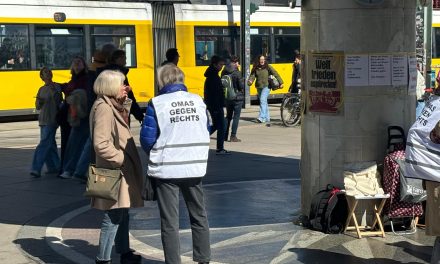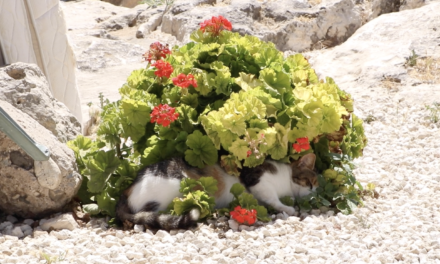In the heart of Berlin, where the vibrant streets pulse with creativity and individuality, lies a treasure trove of fashion heritage waiting to be explored. Vintage shops can be found all over the city and hold the stories of many different eras of historical and societal changes. Learn more about the story and the importance of the vintage community in Berlin, as we talk to and hear from vintage enthusiast and sales person of the second-hand shop located in Berlin Daniel and Berlin based sustainable fashion designer Selda Palaci Alaçam.
Berlin is celebrated for its mixed style and diverse culture and provides the perfect area for the resurgence of vintage clothing. Unlike the predictable fashion scenes of other cities, Berlin’s tailored landscape is a constellation of personalities something that is also represented by Selda, who with her Turkish heritage, designs and creates sustainable fashion in Berlin reflecting the Turkish styles. “In berlin everyone gets to be themselves through fashion” she shared. A thought Daniel also shared, he believes that “the style is different in Berlin, and everybody likes every style.”
Stepping into a vintage shop in berlin feels like you’re embarking on a journey through time. The racks are filled with garments that carry the whispers of history, each piece telling a story of its own. From timeless classics to eccentric ensembles, the selection is as diverse as the city itself. And it’s not just about the clothes; it’s about the experience – the thrill of unearthing a hidden gem, the excitement of piecing together a one-of-a-kind ensemble.
For many, the allure of vintage clothing extends beyond aesthetics; it’s a form of self-expression. In a world saturated with mass-produced fashion, vintage pieces offer a chance to stand out from the crowd and make a statement. As Daniel puts it, “you can find a lot of different fits in the thrift shops,” allowing individuals to put together a wardrobe that reflects their personality and values.
But the appeal of vintage fashion transcends style, it’s also a conscious choice. A survey among 2000 women in the UK issued by Barnardos, a childrens charity, found that the average women only wear a clothing item 7 times. Putting this in perspective, this means that a piece of clothing is only worn for 1 week of a person’s life. “Something is being done with sustainable fashion, but we have come to such a point that we need to stop consuming” Selda shared.
In an era where sustainability and ethical consumption are at the forefront of public consciousness with companies allocating time, resources and attention to instill environmental and social responsibility into their practices (McKinsey & Company, 2023). And the number of German consumers caring about sustainable fashion rising with 38% in 2017 and 48% as of 2019 (Statista Research department, 2024). Sustainability is becoming the more popular choice. “Vintage clothing are the sustainable choice” Daniel mentions while emphasizing the environmental and ethical considerations of buying vintage, particularly in Berlin where it is not just accepted but celebrated “In Berlin especially, it’s very positive” he adds. But for Selda it is even more than just a positive image, it’s also a fight for a better world. “There are about 11 million pieces of textile, and it’s too much” She shares while sharing her reasons to produce sustainable and buy vintage.
However, navigating the world of vintage fashion isn’t without its challenges. While Berlin may embrace individuality and creativity, other parts of Germany still cling to a little bit more conventional standards of fashion. “In Berlin, it is cool to buy vintage clothing and in some other countries or other parts of Berlin it is not as usual to buy vintage stuff.” Daniel shares while shedding light on this discrepancy, attributing it to historical and socio-economic factors. “After the second war, we had the split between the two parts of Germany,” he explains. “The east side of Berlin and Germany, was not as rich as the west side.” This divide, he suggests, has influenced attitudes towards vintage clothing, with the west side often viewing it with a bit more disdain. “It is not really hated, but maybe the richer people do not like wearing or see people walking around with secondhand clothes” he mentioned. “We have the split between the richer people on the west side, and the east side is not really poor but just different people”.
Despite these challenges, Berlin remains a beacon of vintage fashion a city where the past intertwines seamlessly with the present in a harmonious dance of style and self-expression. With each thread, each seam, Berlin’s vintage shops weave a tapestry of stories, inviting all who enter to embrace their individuality and rewrite the narrative of fashion.
Daniel finally summarizes, “There are no limits. you can wear everything with every fit, and you can mix some colours up or use something unusual, it’s totally fine.” In this boundless realm of vintage wonder, the only rule is to wear your story proudly.








